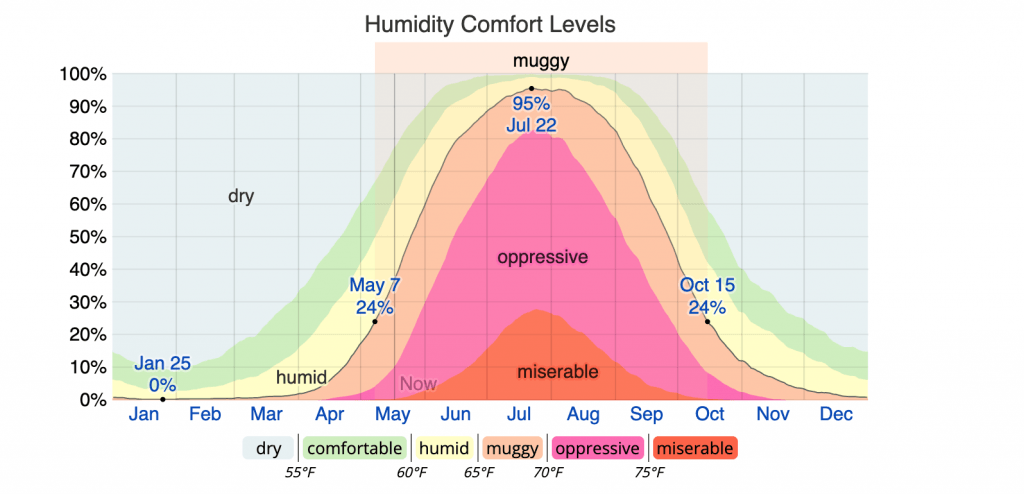Humidity Levels and Mold Growth

Humidity, Dew Points, and the Myrtle Beach Climate
Conditions for Mold Growth
Mold spores live and grow on and in organic material. Around your home this may be wood, carpeting, insulation, or paper. These organic materials are the "food" source for mold. Mold growth is not just a respiratory and health problem, it also can slowly destroy the structural integrity of walls, framing, and flooring.
While there are some molds that can thrive in cold temperatures, most mold thrives in warm, moist areas. For this reason, indoor mold growth can run rampant, especially in hot, sticky areas like an attic or a poorly ventilated room.
If mold spores grow and spread in these areas, a professional mold removal service is required. After successful remediation, the best way to prevent returning mold is to control indoor humidity and ventilation.
Signs of High Indoor Humidity and How to Control It
Indoor mold growth is often a clear sign of indoor humidity, but you may see other signs as well. Indicators of high indoor humidity include:
- Condensation on windows, walls, and around plumbing
- Mildew on kitchen or bathroom surfaces
- Feeling sticky and uncomfortable indoors
High indoor humidity (and resulting mold growth) often means your HVAC system is inefficient. After mold removal by a professional service like MasterTech Environmental of Myrtle Beach, you'll want to work with an HVAC company to address humidity, ventilation, and air circulation concerns.
As a result, using portable dehumidifiers are a good temporary solution. Used in poorly ventilated and humid rooms, dehumidifiers are inexpensive tools that will remove excess moisture from the air. Although this may take some of the work off your HVAC systems plate, it's a temporary solution if the cause is poor air flow.
Take Care of Humidity Levels and Mold Growth This Summer
MasterTech Environmental of Myrtle Beach is your locally-owned and operated mold removal specialist on the Grand Strand. Let our team wipe out your mold problem and find solutions that address the causes of humidity levels and mold growth.



